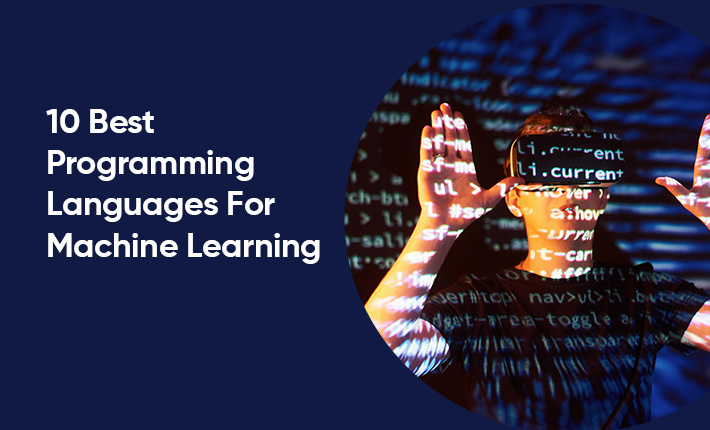Machine learning is a rapidly growing field that is transforming the way we interact with technology. It involves the use of algorithms and statistical models to enable machines to learn from data, make predictions, and make decisions. The choice of programming language is crucial when it comes to implementing machine learning algorithms. Here are the 10 best programming languages for machine learning:
1) Python: Python is the most popular programming language for machine learning due to its simplicity, readability, and the availability of a vast array of libraries and frameworks. Python is easy to learn and use, making it ideal for beginners in machine learning. The most popular machine learning libraries in Python include TensorFlow, Keras, PyTorch, and scikit-learn.
2) R: R is a programming language designed specifically for statistical computing and graphics. R has an extensive collection of packages and libraries for machine learning and data analysis, making it popular in academic and research environments. The most popular machine learning packages in R include caret, random forest, and glmnet.
3) Java: Java is a popular language for developing large-scale enterprise applications, and it has extensive support for concurrency and parallelism. Java has a vast array of libraries and frameworks for machine learning, such as Weka, Deeplearning4j, and Apache Mahout.
4) C++: C++ is a powerful language used for developing high-performance applications that require complex data structures and algorithms. C++ is ideal for developing machine learning algorithms that need to process large datasets quickly. C++ also has an extensive collection of libraries and frameworks for machine learning, such as TensorFlow and Caffe.
5) MATLAB: MATLAB is a high-level programming language used for numerical computation, data analysis, and visualization. MATLAB has an extensive collection of built-in functions and toolboxes for machine learning, making it ideal for prototyping machine learning models quickly. MATLAB is also widely used in academia, making it an excellent choice for researchers and students.
6) Julia: Julia is a relatively new high-level programming language designed for numerical and scientific computing. Julia has excellent support for distributed computing and parallelism, making it ideal for developing machine learning algorithms that need to work in parallel. Julia also has an extensive collection of packages and libraries for machine learning, such as Flux.jl and MLJ.jl.
7) Scala: Scala is a general-purpose programming language that runs on the Java Virtual Machine (JVM). Scala has excellent support for functional programming and concurrency, making it an ideal choice for developing machine learning algorithms that need to run in parallel. The most popular machine learning libraries in Scala include Apache Spark and Breeze.
8) JavaScript: JavaScript is a high-level programming language primarily used for web development, but it also has an increasing number of libraries and frameworks for machine learning. The most popular machine learning libraries in JavaScript include TensorFlow.js, Brain.js, and ConvNetJS.
9) Swift: Swift is a programming language developed by Apple for developing iOS, macOS, and watchOS applications. Swift has excellent support for parallelism and is becoming popular for developing machine learning applications on Apple platforms. The most popular machine learning library in Swift is Apple's Core ML framework.
10) Go: Go is a programming language developed by Google that is designed for building scalable and concurrent applications. Go has a small footprint and is ideal for developing machine learning algorithms that need to run on low-power devices or in cloud environments. The most popular machine learning library in Go is TensorFlow Go.
In conclusion, choosing the right programming language for machine learning depends on several factors, such as the project's requirements, the size of the data, and the available hardware. However, Python is currently the most popular language for machine learning due to its simplicity, flexibility, and extensive collection of libraries and frameworks. It is essential to select the language that best suits the project's requirements, the size of the data, and the available hardware. However, Python is currently the most popular language for machine learning due to its simplicity, flexibility, and extensive collection of libraries and frameworks. It is essential to select the language that best suits the specific use case and project requirements.
Each language has its advantages and disadvantages when it comes to machine learning. Python is popular due to its vast collection of libraries and frameworks, making it easy to build machine learning models quickly. R is preferred by researchers and academics due to its excellent support for statistical computing and data visualization. Java and C++ are popular for developing large-scale machine learning applications that require high-performance computing. MATLAB is commonly used in academia, making it an excellent choice for researchers and students.
Julia is a promising language for scientific computing and machine learning due to its speed and excellent support for parallelism. Scala is popular in big data environments, where distributed computing and parallelism are essential. JavaScript is ideal for web-based machine learning applications, while Swift is becoming popular for developing machine learning applications on Apple platforms. Go is preferred for developing machine learning applications that require high-performance and scalability.
In conclusion, there is no single best programming language for machine learning, as each language has its strengths and weaknesses. However, Python remains the most popular language for machine learning due to its simplicity, flexibility, and extensive collection of libraries and frameworks. Developers should consider project requirements, available hardware, and personal preferences when choosing a programming language for machine learning. With the right language and tools, developers can build sophisticated and powerful machine learning models that enable machines to learn from data and make accurate predictions.





Leave a reply